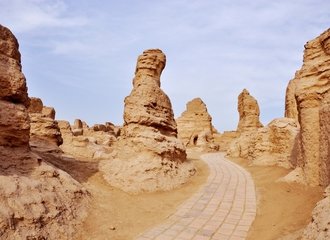Baoguo Temple
Baoguo Temple was originally called Huizong Hall when it was built during the Ming Dynasty (1368 to 1644), and was later renamed Baoguo Temple (报国寺) by Kangxi Emperor (康熙皇帝) in the Qing Dynasty (1644 to 1912). To this day, in fact, you can still find the horizontal nameplate on the mountain gate with "The Bao Guo Temple" personally written by Kangxi. Of all the various temples on Mount Emei today, Baoguo Temple is the the oldest and serves as the center for many Buddhist festivals every year. A magnet for devout Buddhists and interested travelers, Baoguo Temple is the first structure that visitors happen upon and is considered the gate to Mount Emei.

A bird’s eye view of Baoguo Temple reveals a classical Chinese courtyard with structures around its edges. Taking advantage of the Mount Emei's geography, Baoguo Temple was built with four buildings leaning towards the mountain face, each one taller than the next.
In addition, to the exquisite temple structures, the china Buddha sculpture under the sutra depository sits with a graceful posture and the expert craftsmanship of the sculpture can be traced back to the Ming Dynasty!
In the front hall is a 7 meter (23 feet) high purple copper tower, which has fourteen levels and more than 4,700 Buddhist figures cast on its body. Walking through the gate of the Baoguo Temple, you’ll find a newly built pavilion by where the large Ming Dynasty bell hangs. The bell is 2.3 meters (7.5 feet) high and weighs more than 10 tons (22,040 pounds). Upon being struck, it can be heard far and wide across the tranquil mountain landscape, creating a peaceful, cleansing Buddhist atmosphere.
Tranquility is Mount Emei's gift to those who visit. Start your journey of calm and repose at the ancient Baoguo Temple!





















